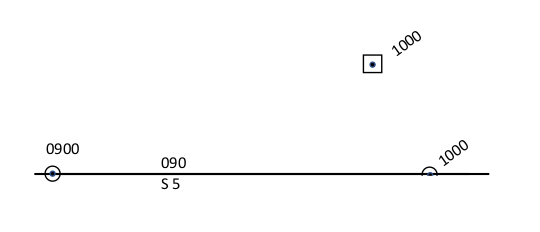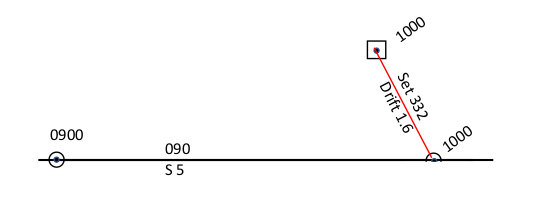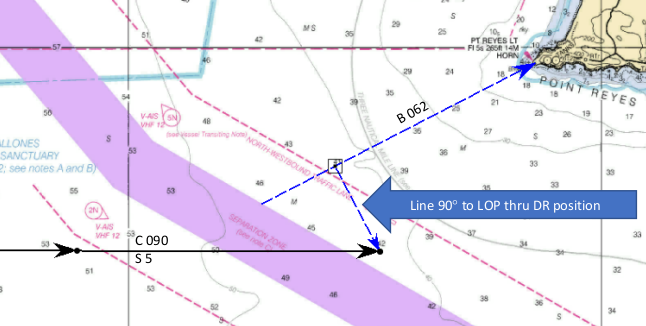What is an estimated position
Dead reckoning uses only course, speed, time, and distance to establish an approximate position.
Two or more lines of position are required for a fix of a vessel’s actual location.
An estimated position is anything in between. As a result, it may be a DR position with set and drift taken into account. It may also be a single line of position in plotted into a DR location.
While estimated positions are approximate, they are more accurate than a simple DR position.
Chart Notation

The plotting symbol for an estimated position is a square with a dot in the middle. In the example above there is no indication of the additional factor used to establish the estimated position. Under normal circumstances, set and drift or the single line of position used would be added to the plot as in the following examples.
Set and drift and the estimated position
Expanding on the illustration above, set and drift have been added in this example.

A complete discussion of set and drift, how to calculate it, and how to compensate for it may be found in the Set and Drift lesson.
Set and drift and a single line of position
Establish an estimated position (EP) using a bearing to an object as a single line of position (LOP). The closest point along the LOP to the DR position is the EP. A 90° angle from the LOP to the DR position is always the closest point.

Steps to find an Estimated Position using a single LOP
- Construct DR Plot
- Obtain bearing to an object. Plot to establish a single LOP
- Draw line at a 90° angle to the LOP. Line passes through the DR position
- Estimated position is the point on the LOP that the 90° line originates from.
Continuing the DR plot
In the Dead Reckoning and Fixes lessons you were instructed to “reset” the DR plot anytime a fix is established. An estimated position is not a fix. It is still considered an approximate position. Consequently, the plot should not be reset. Instead, continue with the existing DR plot.
